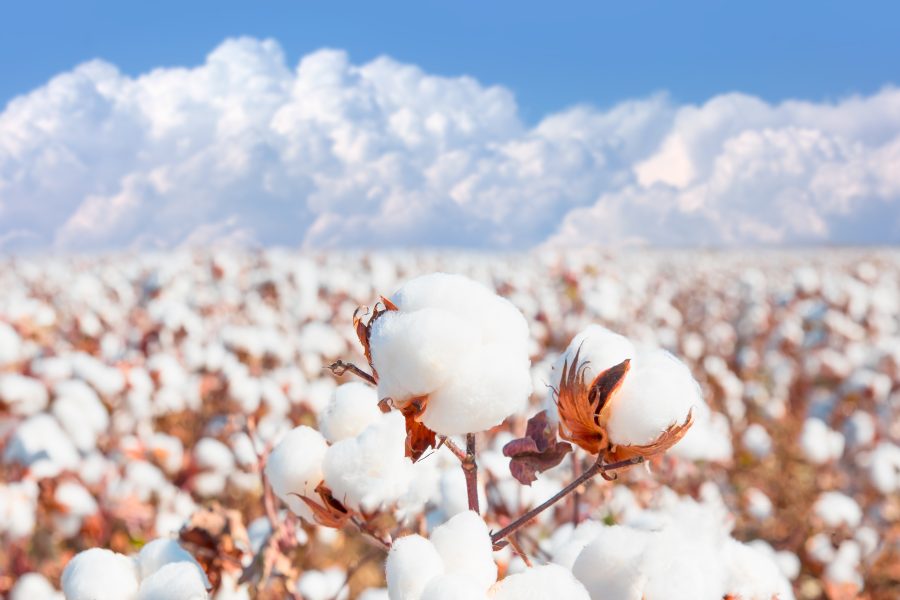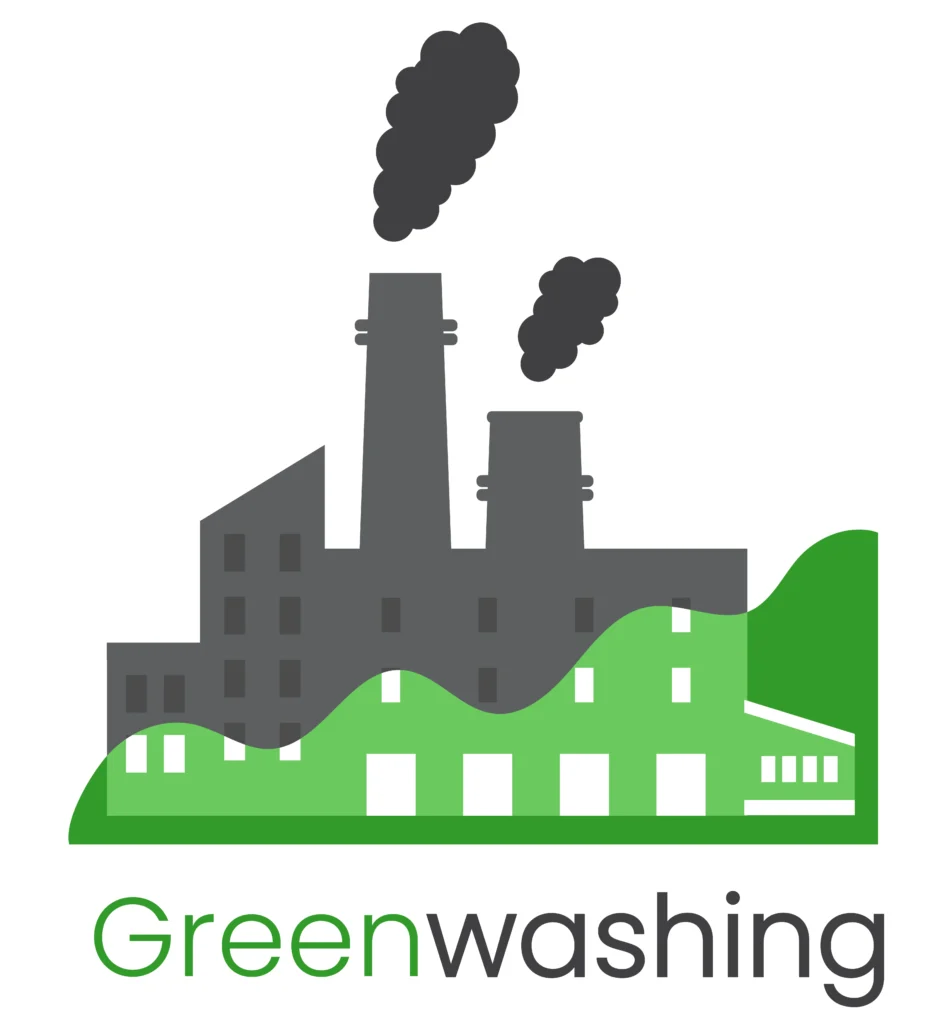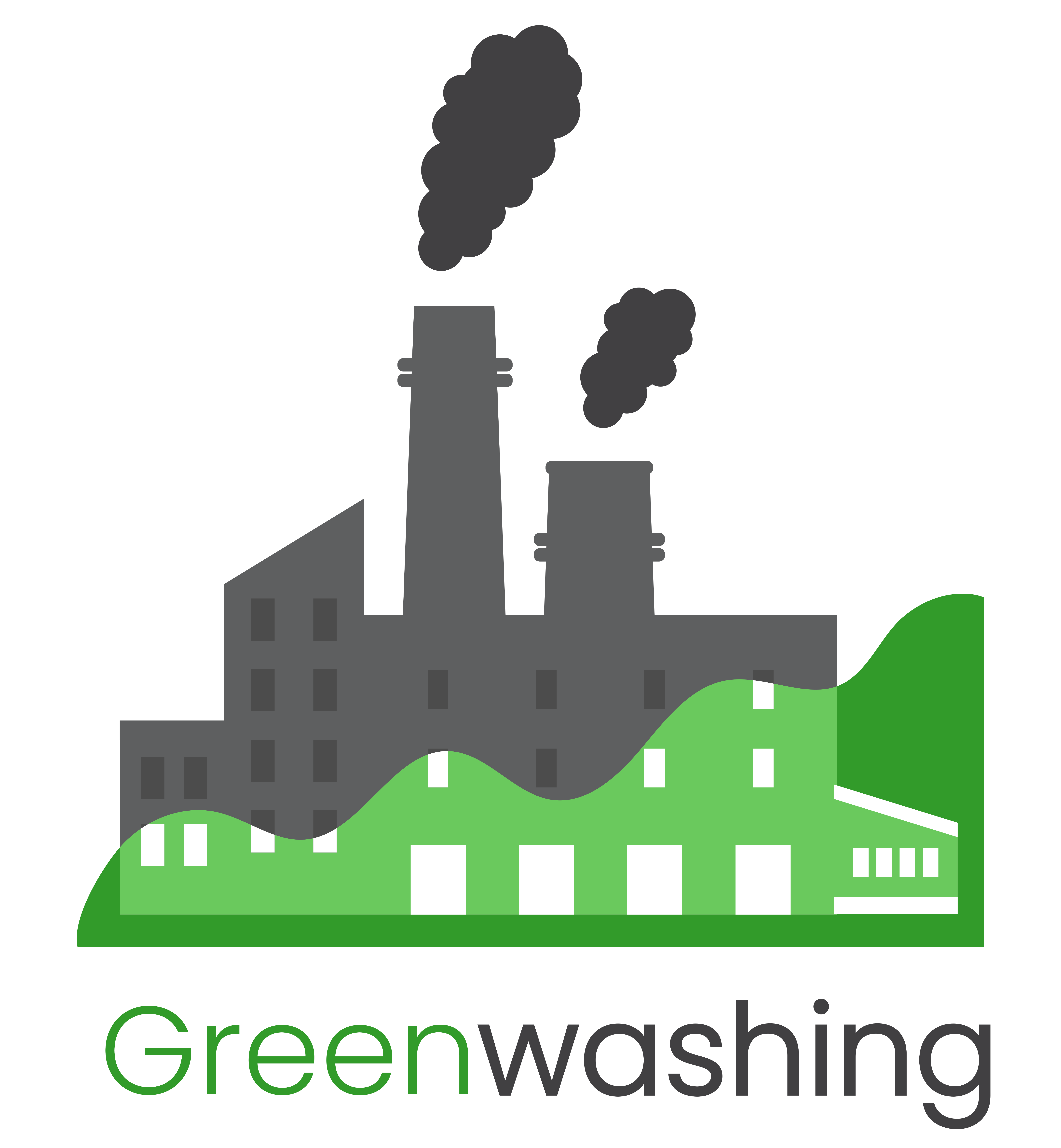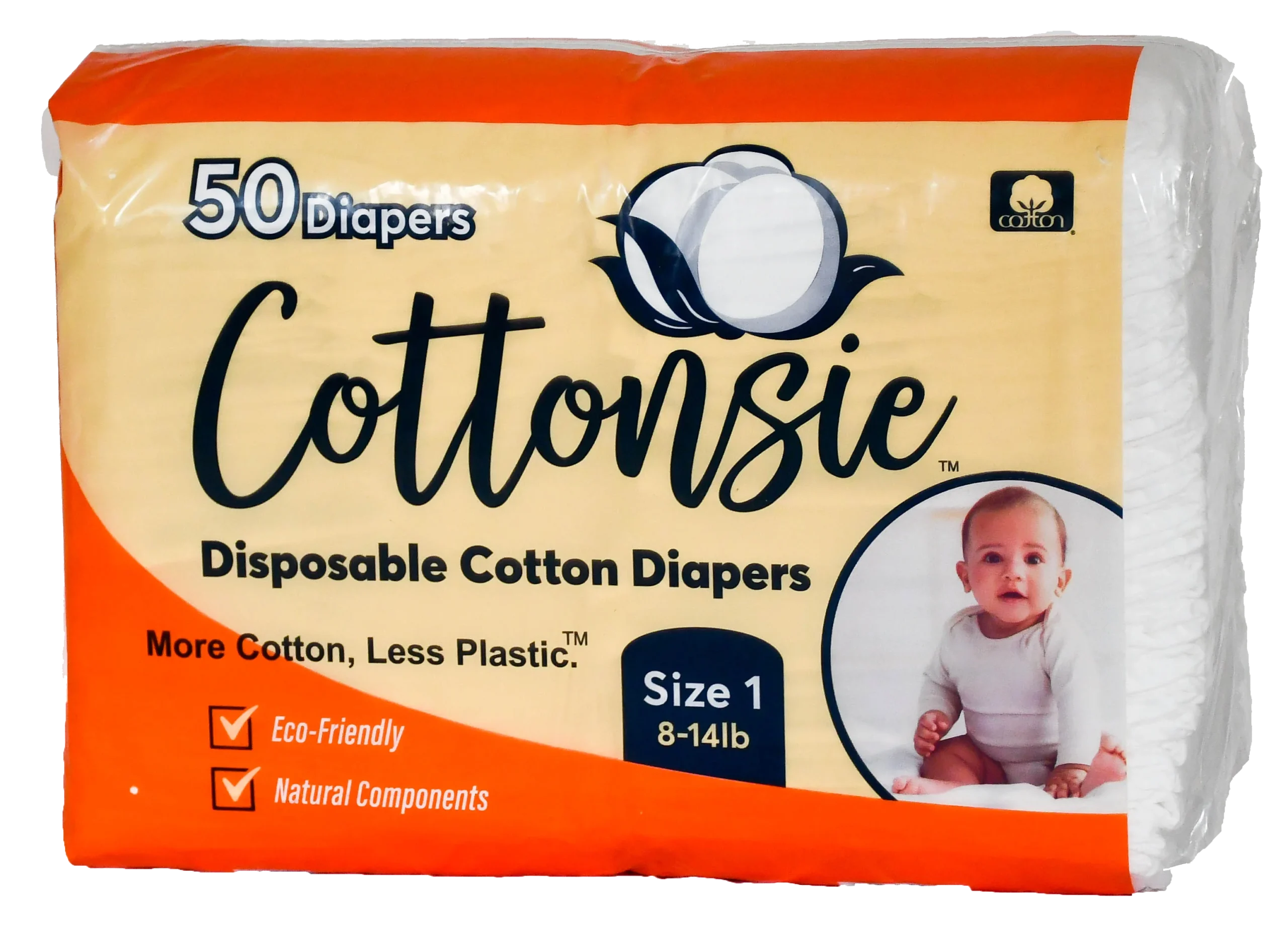
Greenwashing Diapers: Are “Eco-Friendly” Diapers Just a Scam?
Greenwashing Diapers: Are “Eco-Friendly” Diapers Just a Scam?
The disposable diaper industry has seen significant growth, with expectations to reach $159.3 billion by 2032, up from $85.2 billion in 2023. This growth is driven by factors like rising birth rates and increasing awareness of hygiene (IMARC, 2024). Despite the benefits it offers parents, disposable diapers contribute heavily to environmental issues. They are the third most common waste in landfills and can take up to 500 years to decompose, leaching harmful pathogens into surrounding soil and water (Tokat et al., 2024). The non-biodegradable materials, such as polypropylene, are made from petroleum products, leading to carbon emissions and microplastic contamination (Capezza et al., 2023). As consumers become more aware of these environmental impacts, some diaper companies claim to offer eco-friendly alternatives, but often these claims are misleading, a practice known as greenwashing.
Greenwashing refers to the marketing tactic where companies falsely promote their products as environmentally friendly without making meaningful changes to the product or its production processes. The United Nations defines greenwashing as “misleading the public to believe that a company or other entity is doing more to protect the environment than it is” (United Nations, 2024). This allows companies to profit from the growing demand for eco-friendly products while continuing business as usual. In recent years, the UN has focused on educating consumers about greenwashing, emphasizing how it diverts attention from real solutions and misleads well-meaning customers.
Diaper companies use greenwashing tactics to advertise their products as sustainable, highlighting eco-friendly materials or partnerships that sound good on paper. Some common methods include: 1) labeling diapers as “sustainably sourced” or “plant-based” when most of the product is still made from non-biodegradable materials; 2) making vague promises, like replanting a small number of trees; 3) promoting chlorine-free bleaching methods, even though non-chlorine bleaching is safe and widely used; and 4) altering packaging with earthy colors or visuals of nature to make the product seem environmentally friendly. These tactics mislead consumers, leading them to believe they are making eco-conscious choices.
Misleading Labels
Polylactic acid (PLA), a biodegradable polymer derived from plant sugars, is often marketed as a sustainable alternative to plastics in products like diapers. Companies claim that PLA is biodegradable and recyclable, but this material requires specific recycling processes that most facilities cannot accommodate. In general, PLA takes about 80 years to break down in a landfill, significantly reducing its environmental benefits (Gianeco, 2024). Moreover, the processes used to create PLA are highly industrialized, relying on fossil fuels like sulfuric acid, which is used in its synthesis. This increases demand for sulfuric acid, a material already under pressure due to its extensive use in industries like fertilizer production and lithium battery manufacturing (Maslin et al., 2022; USGS, 2022).
Despite PLA’s claims, laboratory testing of several “plant-based” diapers reveals that they contain very little PLA. In one study, only one diaper out of four marketed as “eco-friendly” contained any PLA, and even that had non-biodegradable components such as polyethylene, polyester, and polypropylene, which can take hundreds of years to break down (Manteco, 2024; Nghiem, 2021).
Replanting Harvested Trees – Does it Matter?
Cellulose, a tree-based fiber, is the core material in most diapers due to its absorbency. However, the environmental impact of harvesting trees raises concerns about deforestation. To mitigate this, some companies claim to use sustainably sourced cellulose and promise to replant trees to offset their environmental impact. These claims often focus on partnerships with Forest Stewardship Council® (FSC®) certified sources, which ensure that forests are regenerated as trees are harvested. While these efforts may sound promising, they often have little meaningful impact. For instance, one company’s promise to replant 1,000 trees is negligible when compared to the number of trees required for diaper production—one child may require the equivalent of 20 trees’ worth of cellulose over the course of their diaper use (Clean Water Action, 2024). Furthermore, it takes years, sometimes decades, for these newly planted trees to reach a size that can absorb significant amounts of carbon dioxide, making these replanting efforts an ineffective method for carbon offsetting (Wendel and Smith, n.d.; Minerva Action Group, 2024).
Branding: How Packaging and Product Appearance Affect Sentiment
Another common greenwashing tactic involves altering packaging to make it appear more eco-friendly. Diaper companies often use earthy colors like green and brown, or images of trees and plants, to create a visual association with nature. Research has shown that consumers perceive products in green packaging as more environmentally friendly, even if the product itself is not (Seo and Scammon, 2017). Some companies also use dyes to make the diapers appear more natural by giving them a brown tint, which further suggests an eco-conscious product, though this is more about marketing than actual sustainability.
Chlorine-Free: Does it Matter?
The marketing of “chlorine-free” diapers is another greenwashing tactic commonly used in the diaper industry. In the past, wood pulp used in diaper production was bleached with elemental chlorine, but this process was replaced with chlorine-free methods in the 1980s due to concerns about dioxins, toxic byproducts. However, the alternative methods—elemental chlorine-free (ECF) and total chlorine-free (TCF)—still use chlorine compounds like chlorine dioxide. These methods do not produce harmful dioxins, and research shows that dioxin exposure from diapers is negligible (Axegård, 2019). Despite this, companies use “chlorine-free” labels to imply their products are safer, even though the process is standard and widely accepted in the industry.
Eco-Friendly: What Are They Actually Made of?
A laboratory analysis of four diaper brands marketed as “eco-friendly” found that the majority of their materials were non-biodegradable, including polypropylene and polyester. While the core material of each diaper was cellulose, only one diaper contained a small amount of PLA. The rest of the diaper components were made from plastics that can take hundreds of years to decompose, revealing that these products, despite their eco-friendly labels, are primarily made from materials that do not break down quickly in landfills.

Are There Viable Alternatives?
While disposable diapers provide convenience, their environmental impact highlights the need for sustainable alternatives. Cloth diapers, typically made from cotton, bamboo, or hemp, are more eco-friendly due to their faster-growing nature. For example, cotton cloth diapers require less than 10 kg of cotton for two years’ worth of use, while a child’s disposable diapers require approximately 20 trees’ worth of cellulose (Meseldzija et al., 2013; Clean Water Action, 2024). However, cloth diapers have their drawbacks, including the need for regular washing, which increases water, energy, and detergent use, particularly in areas with water scarcity (Hoffman et al., 2020). Diaper services, which use commercial-grade washing machines, may offer some advantages but can still result in higher water and energy consumption, and the added carbon footprint from delivery services can offset some of the benefits.
While greenwashing has become a widespread issue in the diaper industry, it is important to recognize that the environmental damage caused by disposable diapers is not insurmountable. The shift toward genuine sustainability in the diaper market is not only possible but necessary, as awareness of climate change and environmental conservation continues to grow. There are several aspects to consider when evaluating the true environmental impact of diaper products, and businesses that wish to contribute positively to the environment must make lasting, significant changes across their production processes.
Corporate Responsibility and Regulation
One of the primary issues with greenwashing in the diaper industry is the lack of transparency and accountability. Companies are not always required to disclose the full range of materials used in their products or the processes involved in production. Often, brands make broad claims about their environmental efforts without backing them up with data or certifications from third-party organizations. Regulatory bodies, such as the United States Environmental Protection Agency (EPA) and the European Union’s Ecolabel program, are working to create clearer, more enforceable standards for sustainable product claims. This could help reduce the prevalence of greenwashing by holding companies accountable for their marketing practices. However, until such regulations are standardized across industries, including diaper production, it is important for consumers to remain skeptical of broad sustainability claims.
As companies continue to expand their sustainability efforts, it’s essential that any steps taken toward environmental responsibility are measurable, transparent, and verifiable. Transparency in supply chain management, especially concerning the sourcing of raw materials, is crucial for fostering trust with eco-conscious consumers. Genuine sustainable practices could include using renewable energy sources, minimizing water usage, and reducing waste throughout the manufacturing process. In this way, diaper companies could not only reduce their carbon footprint but also contribute to broader global sustainability goals, like the United Nations’ Sustainable Development Goals (SDGs), particularly in terms of responsible consumption and production (SDG 12).
The Role of Consumer Education
Consumers must also play a key role in pushing the diaper industry toward more sustainable practices. This requires education on what constitutes a truly eco-friendly diaper, which involves understanding the long-term environmental impact of the materials used, the carbon footprint associated with production, and the disposal process. Consumers who are informed about the realities of greenwashing tactics can more effectively advocate for companies to take genuine steps toward sustainability. Awareness campaigns and educational resources that explain the significance of product certifications, such as FSC (Forest Stewardship Council) for sustainably sourced materials or Cradle to Cradle certification for sustainable design, can help shoppers make more informed choices.
It is also crucial to raise awareness of the unintended consequences of popular “eco-friendly” alternatives, like PLA-based diapers. While they may sound environmentally friendly on the surface, their true ecological footprint is often much larger than advertised. By examining the full lifecycle of a product—from sourcing raw materials to end-of-life disposal—consumers can better understand the limitations and potential benefits of various alternatives. For example, while PLA is biodegradable, its degradation process is slower in natural landfill conditions than in controlled industrial composting environments, limiting its practical eco-advantage. Knowing the entire picture allows consumers to choose the truly better alternatives, such as cloth diapers, which are reusable and require far fewer resources over time, or diaper services that provide energy-efficient laundering processes.
The Circular Economy: Moving Beyond Disposable Diapers
One promising solution to the environmental challenges posed by disposable diapers lies in the concept of the circular economy. This model encourages the design of products that can be reused, repaired, or recycled, rather than thrown away after a single use. In the case of diapers, a circular approach could involve developing materials that are both biodegradable and recyclable, reducing their environmental impact both in terms of waste and resource consumption. Some diaper brands have explored the possibility of creating products with recyclable components, but this remains an area where more innovation and research are needed.
Additionally, diaper reuse and service-based models offer a potential pathway for significantly reducing environmental waste. These models often involve the collection, cleaning, and redistribution of cloth diapers, providing a sustainable and convenient solution for busy parents. By centralizing the laundering process, diaper services can use energy-efficient machines and reduce water waste, creating a more environmentally friendly alternative to traditional disposable diapers. However, as noted earlier, the success of diaper services is dependent on the scale and infrastructure involved. The environmental benefits are maximized when services operate at a larger scale, where economies of scale reduce water and energy consumption.
While not as mainstream as disposable diapers, cloth diapers and reusable diaper services offer an environmentally-conscious option for parents. The long-term sustainability of cloth diapers—especially when washed with eco-friendly detergents and dried using energy-efficient methods—far outweighs that of disposable diapers. Cloth diapering can be seen as an example of a product within a circular economy, where the use phase extends for multiple children, decreasing the overall environmental impact.
Moving Toward Authentic Sustainability
As the demand for disposable diapers continues to rise, the environmental impact of these products cannot be ignored. The diaper industry must evolve to address the growing concern over waste, deforestation, and carbon emissions associated with disposable diapers. Companies engaging in greenwashing only delay the progress needed toward more sustainable and responsible manufacturing practices. While greenwashing tactics may continue to mislead consumers, the increasing availability of reliable third-party certifications, along with growing consumer demand for real change, presents an opportunity for the diaper industry to clean up its act.
It is essential for consumers to remain vigilant, demanding accountability from companies making sustainability claims. By becoming better informed and making conscious purchasing decisions, consumers can drive the industry toward authentic environmental stewardship. Whether by choosing truly eco-friendly disposable diaper alternatives or opting for cloth diapering solutions, each individual action contributes to a larger movement of sustainability that has the potential to significantly reduce the environmental footprint of diaper production and waste. As the diaper industry continues to grow, so too should its commitment to a cleaner, greener future.
Takeaways
The diaper industry is rife with greenwashing tactics, with companies misleading consumers by using terms like “plant-based” and “chlorine-free” without making significant changes to the materials or production processes. Consumers must be cautious and informed about the true environmental impact of the products they purchase. Laboratory tests reveal that most “eco-friendly” diapers still rely heavily on non-biodegradable polymers. To make truly sustainable choices, consumers should look beyond misleading labels and understand the real environmental impact of the products they use, considering alternatives like cloth diapers or diaper services that reduce waste and support circular economies
The disposable diaper industry delivers convenience to parents across the world and demand is showing no signs of slowing. The industry is expected to grow from $85.2 billion in 2023 to $159.3 billion in 2032, due in part to increasing birth rates and growing hygiene awareness (imarc, 2024). However, the impact of widespread use of disposable diapers on the environment has come into question as concerns of environmental impact and climate change continue to rise. Disposable diapers are the third most common waste in landfills and can take up to 500 years to decompose, contaminating nearby soil and water sources with dangerous pathogens in the process (Tokat et al., 2024). The various non-biodegradable plastic polymers, such as polypropylene, in diapers are derived from petroleum products, therefore their production contributes to both carbon emissions and microplastic contamination (Capezza et al., 2023). As these concerns become more apparent to consumers, many companies have made efforts to provide environmentally-friendly products to their consumers–or so they lead them to think.
Greenwashing is the practice of rebranding and marketing products to make them appear more environmentally-friendly and sustainable without actually making substantial changes, if any, to products or operations. The United Nations defines greenwashing as “misleading the public to believe that a company or other entity is doing more to protect the environment than it is” (United Nations, 2024). This practice helps companies continue, or even increase, sales to concerned consumers without affecting their bottom-line. In more recent years, the UN has brought attention to the harm greenwashing does to climate change mitigation efforts through outreach focused on educating consumers about greenwashing tactics, emphasizing how advertising false solutions detracts from true action and causes consumers to mistakenly believe these companies are making impactful progress towards a sustainable future.

Consumers are demanding eco-friendly alternatives to conventional plastic diapers, which, many believe, are harming the environment and contributing to plastic toxicity. However, many diaper products that bill themselves as “eco-friendly” are far from it.
Unscrupulous diaper manufacturers have answered this call with deceptive claims that their products are plant-based or biodegradable – when they are no different than conventional diaper brands that are mainly constructed from plastic. In fact, many “eco-friendly” diaper brands are deliberately misleading consumers into believing that the products they are purchasing, at a premium price, are constructed with natural ingredients that come from plants, but they are no different than standard plastic diapers.
Misleading Labels
Polylactic acid (PLA) is a biodegradable polymer that can replace plastic in certain applications, effectively utilizing natural resources and reducing microplastic contamination in the environment. Certain diaper brands have incorporated PLA into their product to support their “sustainable” labeling, since PLA is synthesized from lactic acid, which is derived from sugar (Li et al., 2020). Companies market the biodegradable and recyclable properties of PLA, despite the fact that these materials require a dedicated recycling facility since they are not compatible with other recyclables, causing productions containing PLA to be typically incinerated or sent to the landfill. While it is true that PLA is biodegradable, degradation takes roughly 80 years in natural landfill conditions, as opposed to industrial recycling plants with proper capabilities that can degrade PLA within days (Gianeco, 2024). This can significantly hamper PLA’s benefits for the environment.
In addition to the biodegradability issues, PLA is highly synthesized and consequently, not a natural product. PLA is synthesized via three methods: the lactonitrile method, acrylonitrile method, and the propionic method. Both the lactonitrile and acrylonitrile method require sulfuric acid, which has its own set of environmental and economic concerns. At least 80% of the global stock of sulfuric acid is derived from fossil fuels (Maslin et al., 2022), and therefore, scaling its use in the diaper industry would increase sulfuric acid demand – which is already strained due to efforts to reduce fossil fuel production. Current sulfuric acid demand is largely from the fertilizer industry, so increased disruption in the supply chain of sulfuric acid would cause instability in the global food supply, a phenomenon already of concern due to the extensive use of sulfuric acid in ore mining and lithium battery production (USGS, 2022; Maslin et al., 2022).
Despite the global environmental and economic concerns of scaling the use of PLA, laboratory testing reveals that products labeled “plant-based” actually contain very little PLA, if any. Four diapers were tested via microscopy and infrared spectral analysis to determine material composition of each diaper section, of which only one marketed as “eco-friendly” contained any amount of PLA. The product with PLA in the core material contains a non-biodegradable polyethylene sheath, while the remaining diaper materials were a mixture of non-biodegradable polyester and polypropylene. Polyester takes 20 to 200 years to decompose (Manteco, 2024), while polypropylene takes up to 450 years (Nghiem, 2021). These results reveal that some diapers marketed as biodegradable actually contain only a small fraction of biodegradable material.
Replanting Harvested Trees – Does it Matter?
The core diaper material is cellulose, a tree-derived fiber used for its highly absorbent properties. With the use of cellulose comes concerns for deforestation, therefore companies use replanting promises to mislead consumers into believing they are supporting reforestation efforts. Companies claim their products to be made of “FSC Certified, sustainably sourced plant-based pulp, which helps nurture our planet’s forests”. Pulp is inherently plant-based, given it is derived from trees. Companies use claims of partnerships with Forest Stewardship Council® (FSC®) certified wood sources, which are logging sources that regenerate forests as trees are harvested to limit net forest loss, which, to the consumer, appears to negate the overall impact of harvesting. These claims are often vague and have little impact on the environment. One company advertises a promise to replant 1,000 trees, but no timeline or further detail is given and the carbon emission offset from replanting 1,000 trees is negligible, especially in comparison to the sheer number of trees that are harvested for their products. For better context, a single baby is estimated to require 20 trees-worth of cellulose while of diaper age (Clean Water Action, 2024). Some companies promise to replant one tree for every tree harvested, but what consumers do not often know is that it takes roughly 10-15 years for a white pine tree to reach a considerable size (Wendel and Smith, n.d.) and it does not absorb its full capacity of carbon dioxide for over 80 years (Minerva Action Group, 2024). A white pine at approximately 15 years of age absorbs only roughly 6% of carbon dioxide of that of a 75 year old tree, for example. The extensive time needed for these “regenerated” trees to reach a size that is similarly beneficial for atmospheric carbon absorption as the harvest tree is often severely overlooked, misleading the consumer into believing these companies are completely offsetting their harvesting and even supporting reforestation.
Branding: How Packaging and Product Appearance Affects Sentiment
Another form of greenwashing is the use of dyes to make products appear naturally-sourced. Several companies known to dye their materials brown to give a “natural” look to their products have been called out in the press for this practice. Some companies defend their dye practices by claiming that the choice to dye their product is to differentiate it from competitors, rather than to mislead their consumers. However true this may be, most consumers are unlikely to read the fine print on a diaper company’s website to learn about this important distinction.
Companies also alter their packaging to appear more sustainable, without actually changing the product itself. This greenwashing tactic is a marketing strategy, using ‘earthy’ colors, such as green, brown, and white, as well as suggestive images such as trees and plants to create a visual association between the product and the environment. Research on consumer sentiment when exposed to green advertising reveals the color green on packaging enhances consumer perceptions of the environmental impact of products in a variety of industries (Seo and Scammon, 2017; Parguel et al., 2014). Some of these studies note a negative brand image for consumers who are aware of greenwashing marketing tactics (Seo and Scammon, 2017), which potentially reduced brand trust among companies that are actually providing sustainable and eco-friendly products.
Chlorine-Free: Does it Matter?
Making claims of using ‘healthier’ practices over other safe, standard methods to appeal to consumers is a common greenwashing tactic (United Nations, 2024). In the diaper industry, this tactic is used by advertising “chlorine-free” diapers.
Prior to the 1980s, wood pulp was commonly bleached with elemental chlorine during manufacturing to remove excess lignin and impurities, helping to remove unpleasant odors and prevent allergic reactions. However, the method was found to produce dioxins, chemicals that are known carcinogens and environmental pollutants (Axegård, 2019). As such, the practice of elemental chlorine bleaching was replaced by elemental chlorine-free (ECF) and total chlorine-free (TCF) methods. The ECF bleaching method uses chlorine dioxide so it is not “chlorine free,” but despite the name, the chlorine dioxide method does not produce dioxins, it is simply a chemical naming convention. Dioxin exposure from diapers is well-studied, and research shows negligible levels of dioxins in diapers, even in those diapers containing pulp bleached by elemental chlorine. Exposure analysis from 2002 indicated that a nursing infant’s diet causes 30,000–2,200,000 times the exposure than chlorine-bleached disposable diapers (DeVito and Schecter, 2002). However, despite low dioxin levels in the diapers themselves, the concern for dioxides in wastewater from production facilities still encouraged regulation changes. In the late 2000s, 88% of the pulp industry used the ECF method, while TCF bleaching accounted for 5% and 6% for elemental chlorine bleaching (Axegård, 2019), demonstrating the widespread adoption of the ECF method. However, companies exploit the distinction between TCF and ECF methods by using “chlorine-free” marketing to mislead the consumer into believing that their products are safer than others–a common greenwashing tactic.
Eco-Friendly: What Are They Actually Made of?
In a laboratory study, four diaper brands making “eco-friendly” or “plant-based” claims were analyzed via microscopy to determine their true composition in each section of the product, including the top/back sheet, the core fiber, core wrap, the film, waistband, and top fiber/film. The core of each diaper in the analysis was comprised of cellulose, as expected. However, none of them contained any significant amount of plant-based biodegradable polymers as advertised.
Diaper 1. The first diaper analyzed is largely comprised of polypropylene components, including the top sheet, back sheet, core wrap, tab core, and tab fiber. The analysis found a fraction of calcium carbonate in the diaper film, a harmless additive the provides extra breathability.
Diaper 2. The top/back sheets, core wrap, tab fiber, film, waist, and hook of diaper 2 is polypropylene and the Velcro loop fiber/film is comprised of nylon and polyethylene. All of the material in this sample is non-biodegradable.
Diaper 3. This diaper is comprised mostly of polypropylene throughout the waist and core section, with a spandex tab stretch material and a polyester acquisition distribution layer (ADL). The ADL is designed for faster absorption from the diaper surface.
Diaper 4. One diaper brand, promoting PLA as a sustainable, non-plastic alternative, used a polyethylene layer around the PLA core for the back sheet, along with a dual-layer top sheet made of polyester (layer 1) and a PLA/polypropylene mix (layer 2), and a polypropylene core wrap, resulting in a minimal percentage of PLA that was encased in standard plastic, which may completely negate its biodegradability benefits.
Each of the diapers analyzed are marketed as “eco-friendly”, leading consumers to believe that these products are composed of a significant amount of biodegradable, plant-based material. According to the results, this was far from the truth, since each one is composed mainly of non-biodegradable polypropylene.
Are There Viable Alternatives?
While the growth of the disposable diaper industry provides convenience to consumers, it also raises environmental concerns, highlighting the need to explore sustainable alternatives. The use of cloth diapers reduces landfill waste, environmental pollution, and deforestation, but also aids in the practice of circular economy. Cloth diapers are typically made from cotton, bamboo, or hemp, each of which can be highly sustainable due to their fast-growing nature. It is estimated that, for cotton cloth diapers, two years’ worth of diaper use would require less than 10 kg of cotton, whereas a single child requires an estimated 20 full trees for disposable diapers (Meseldzija et al., 2013; Clean Water Action, 2024).
Though cloth diapers are a well-known alternative to disposables, consumers are hesitant to use them because of their inconvenience and the sanitary concerns that come with washing them. Washing also requires higher water, detergent, and energy use. In countries experiencing water scarcity, the use of cloth diapers is disadvantageous and often discouraged (Hoffman et al., 2020). Cloth diapering is also a less viable alternative in regions with inadequate waste treatment infrastructure, where it can pose health risks and require significant energy investments to improve facility capacities.
Diapers-as-a-service models are often seen as environmentally advantageous, as they typically use more energy-efficient washing and drying machines. However, at smaller scales, the water and energy consumption required for these services may not offer significant environmental benefits (Hoffman et al, 2020). The larger washing facilities are estimated to consume 2.5 times less water per diaper change and half the energy in comparison to in-home washing. However, aside from their lack of efficacy in managing moisture and leakage, these services can be expensive for the average consumer, and can require odor reducing solutions for storing the soiled diapers in between pick-ups. The pick-up and delivery services also increase the carbon footprint because of the reliance on vehicles using fossil fuel.
Takeaways
Some diaper companies undermine real sustainability efforts by using greenwashing tactics to drive sales growth and appeal to environmentally-conscious consumers, a concern the United Nations has publicly highlighted. These companies use a variety of misleading greenwashing tactics, including deceptive use of labels such as “plant-based” and “chlorine-free,” making inconsequential reforestation claims, and marketing misleading branding. Despite their claims, laboratory tests reveal most “eco-friendly” diapers are composed of traditional, non-biodegradable polymers. It is vital that consumers are aware of greenwashing tactics and make concerted efforts to understand the validity of a brand’s claims, whether it be through exploring current scientific research or simply by evaluating sustainability statements on their websites and marketing materials – while keeping these greenwashing tactics firmly in mind.
References
Axegård, P., 2019. The effect of the transition from elemental chlorine bleaching to chlorine dioxide bleaching in the pulp industry on the formation of PCDD/Fs. Chemosphere 236, 124386. https://doi.org/10.1016/j.chemosphere.2019.124386
Capezza, A.J., Newson, W.R., Muneer, F., Johansson, E., Cui, Y., Hedenqvist, M.S., Olsson, R.T., Prade, T., 2023. Greenhouse gas emissions of biobased diapers containing chemically modified protein superabsorbents. Journal of Cleaner Production 387, 135830. https://doi.org/10.1016/j.jclepro.2022.135830
Clean Water Action, 2024. Profiles in Prevention. URL https://cleanwater.org/profiles-prevention-do-good-diapers#:~:text=It%20takes%20up%20to%20500,forests%20and%20fossil%20fuel%20supplies. (accessed 11.5.24).
DeVito, M.J., Schecter, A., 2002. Exposure assessment to dioxins from the use of tampons and diapers. Environ Health Perspect 110, 23–28. https://doi.org/10.1289/ehp.0211023
Gianeco Sustainability & Recycling, 2024. How Long Does PLA Take to Decompose? URL https://www.gianeco.com/en/faq-detail/1/10/how-long-does-pla-take-to-decompose (accessed 11.4.24).
Hoffmann, B.S., De Simone Morais, J., Teodoro, P.F., 2020. Life cycle assessment of innovative circular business models for modern cloth diapers. Journal of Cleaner Production 249, 119364. https://doi.org/10.1016/j.jclepro.2019.119364
Honest, n.d. Our Honest Purpose. URL https://www.honest.com/purpose (accessed 11.4.24).
imarc, 2024. Diaper Market Report by Baby Diaper Type. URL https://www.imarcgroup.com/prefeasibility-report-diaper-manufacturing-plant-2 (accessed 11.4.24).
Li, G., Zhao, M., Xu, F., Yang, B., Li, X., Meng, X., Teng, L., Sun, F., Li, Y., 2020. Synthesis and Biological Application of Polylactic Acid. Molecules 25, 5023. https://doi.org/10.3390/molecules25215023
Manteco, 2024. Biodegradability in Fashion. URL https://manteco.com/biodegradability-in-fashion-all-you-need-to-know/#:~:text=It’s%20not%20considered%20biodegradable%20because,on%20the%20environment%20it’s%20in (accessed 11.4.24).
Maslin, M., Van Heerde, L., Day, S., 2022. Sulfur: A potential resource crisis that could stifle green technology and threaten food security as the world decarbonises. Geographical Journal 188, 498–505. https://doi.org/10.1111/geoj.12475
Meseldzija, J., Poznanovic, D., Frank, R., 2013. Assessment of the differing environmental impacts between reusable and disposable diapers. Dufferin Research.
Minerva Action Group, LLC, 2024. Determining Carbon Storage in Local Trees. URL https://www.minervaaction.com/experiment1 (accessed 8.20.24).
Nghiem, L.D., Iqbal, H.M.N., Zdarta, J., 2021. The shadow pandemic of single use personal protective equipment plastic waste: A blue print for suppression and eradication. Case Studies in Chemical and Environmental Engineering 4, 100125. https://doi.org/10.1016/j.cscee.2021.100125
Pampers, 2023. Supporting Sustainable Forest Practices. URL https://www.pampers.com/en-us/sustainability/carbon-footprint/article/sourcing-responsibly (accessed 11.4.24).
Parguel, B., Benoit-Moreau, F., Russell, C.A., 2015. Can evoking nature in advertising mislead consumers? The power of ‘executional greenwashing’. International Journal of Advertising 34, 107–134. https://doi.org/10.1080/02650487.2014.996116
Seo, J.Y., Scammon, D.L., 2017. Do green packages lead to misperceptions? The influence of package colors on consumers’ perceptions of brands with environmental claims. Mark Lett 28, 357–369. https://doi.org/10.1007/s11002-017-9420-y
United Nations, 2024. Greenwashing – the deceptive tactics behind environmental claims. Climate Action. URL https://www.un.org/en/climatechange/science/climate-issues/greenwashing#:~:text=By%20misleading%20the%20public%20to,the%20air%20and%20nearby%20waterways. (accessed 11.4.24).
USGS, 2022. Mineral commodity summaries 2022. https://doi.org/10.3133/mcs2022
Wendel, G.W., Smith, C., n.d. Eastern White Pine. USDA. URL https://srs.fs.usda.gov/pubs/misc/ag_654/volume_1/pinus/strobus.htm#:~:text=Height%20growth%20of%20both%20planted,on%20all%20sites%20(9) (accessed 11.4.24).
Related Articles




